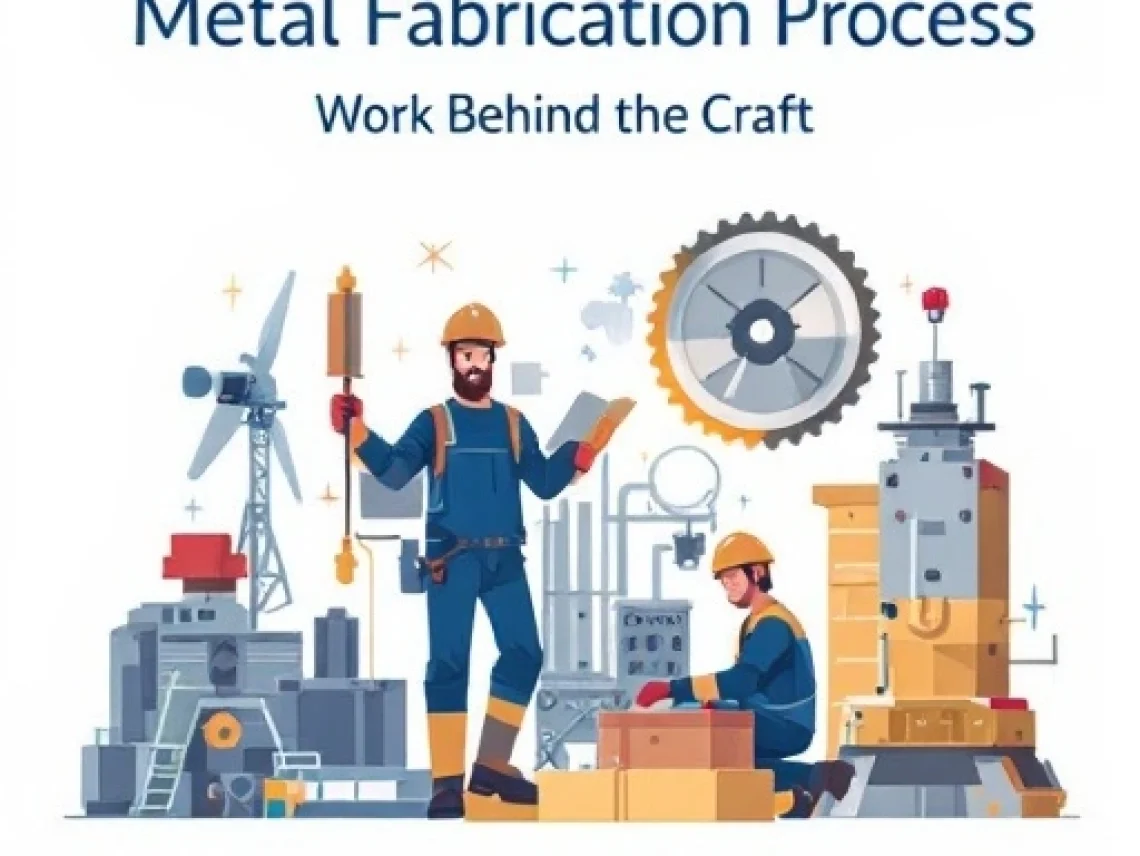
Table of Contents
ToggleMetal fabrication isn’t a single, monolithic process. It encompasses a variety of techniques, each designed to manipulate metal in a specific way. Let’s explore some core processes: cutting, forming, joining, and finishing.
Cutting is precisely what it sounds like – separating metal into the desired shapes and sizes. This is often the first step in the fabrication process. Various cutting methods are used, depending on the type of metal, its thickness, and the required precision.
Examples of cutting techniques include:
Forming involves shaping metal without removing any material. This process alters the metal’s geometry while maintaining its volume. Forming is crucial for creating complex shapes and components.
Common forming techniques include:
Joining brings different metal parts together to create a larger assembly. This is a critical step in creating complex structures and products. Several methods are used for joining, each with its advantages and disadvantages.
Examples of joining processes include:
Finishing is the final step in the metal fabrication process, focused on improving the appearance and protecting the metal from corrosion or wear.
Common finishing techniques include:
Metal fabrication is an integral part of countless industries. Here are just a few examples demonstrating its widespread applications:
Metal fabrication is far more than just working with metal; it’s a skilled craft that underpins countless aspects of modern life. From the buildings we inhabit to the vehicles we drive and the machines that power industries, fabricated metal components are integral. Understanding the core processes—cutting, forming, joining, and finishing—provides a glimpse into the expertise and precision required. As technology advances, metal fabrication continues to evolve, driving innovation across all sectors and shaping a more robust and efficient future. Recognizing its pervasive impact allows for a deeper appreciation of this often-unseen art.
Steel, aluminum, stainless steel, and copper are commonly used due to their strength, durability, and weldability.
Welding fuses the base metals, while brazing uses a filler metal with a lower melting point to join the metals.
Laser cutting offers high precision, clean cuts, and the ability to cut intricate shapes.
It’s used to create pipelines, storage tanks, and components for power plants and renewable energy systems.
Wearing appropriate protective gear (PPE), ensuring proper ventilation, and following safety protocols are crucial to prevent injuries.
Finishing involves surface treatments like painting, powder coating, or polishing to improve appearance and protect against corrosion.
It is a pre-assembled piping component or module commonly fabricated for field installation in a process piping system or module, such as a skid.
Table of Contents
ToggleIn the realm of industrial solutions, Red River emerges as a pioneer, offering a diverse range of custom-engineered products and facilities. Among our specialties is the design and production of Custom/OEM Pressure Vessels, meticulously crafted to meet individual client requirements, ensuring performance under various pressure conditions. Our expertise extends to the domain of prefabrication, where Red River leads with distinction.
The company excels in creating prefabricated facilities, modules, and packages, reinforcing its stance as a forerunner in innovation and quality. This proficiency is further mirrored in their Modular Skids offering, where they provide an array of Modular Fabricated Skid Packages and Packaged equipment. Each piece is tailored to client specifications, underlining their commitment to delivering precision and excellence in every project they undertake.